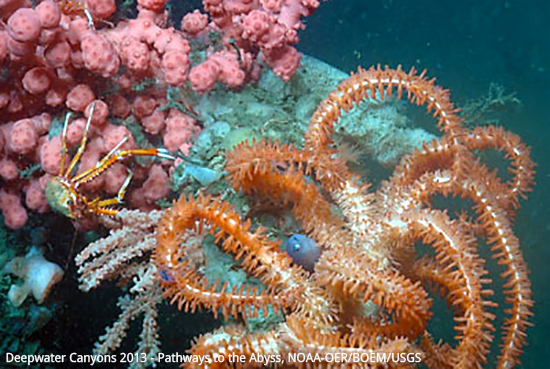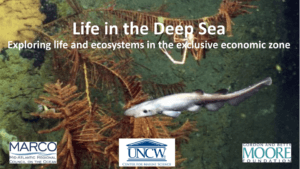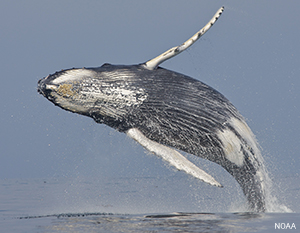SHARED REGIONAL PRIORITIES
Marine Habitats
MARCO works to coordinate the protection of important and unique marine habitats, and where applicable provide opportunities for conservation of resources across jurisdictional bounds.
Overview
Cold-water corals, deep submarine canyons, and a broad, sandy continental shelf are among the diverse ocean habitats of the Mid-Atlantic region. In addition to being home to wildlife like sea turtles, whales, dolphins, seabirds, fish, crustaceans, corals, and other species, these habitats support commercial and recreational fisheries and other important economic activities in the region. MARCO is working with partners to map and document the Mid-Atlantic Ocean habitats in order to maintain sustainable resource use and healthy ecosystems in light of climatic changes and increased human use pressure.

Projects
Regional Wildlife Science Collaborative (RWSC): The RWSC is a multisectoral initiative to facilitate collaboration, common data standards, and data sharing for offshore wind research. www.rwsc.org
NOAA, in collaboration with other federal agencies and external partners, conducted a series of expeditions to survey deepwater canyons from Virginia to Maine. NOAA scientists invited MARCO to help identify priority areas that might be surveyed to help fill biological and geological informational gaps in the Mid-Atlantic. The NOAA ship Okeanos Explorer explored the deep waters of the Mid-Atlantic region, including canyons off New York, New Jersey, Delaware, Maryland and Virginia.
MARCO worked with scientists at the Woods Hole Oceanographic Institution (WHOI) to add genus and species level coral data from deep sea canyons off the Mid-Atlantic coast to the Mid-Atlantic Ocean Data Portal. Using towed camera technology, they explored eight of the Mid-Atlantic’s lesser-studied canyons: Ryan, Carteret, Lindenkohl, Spencer, Washington, Wilmington, Leonard and Accomac canyons.
Life in the Deep Sea

Photo credit: Steve Ross
In fall 2020, MARCO hosted a three-part “Life in the Deep Sea” webinar series, featuring East Coast experts discussing the Mid-Atlantic’s submarine canyons and unique marine species. The series attracted 254 registrants from across the U.S. and abroad, including 156 from the Mid-Atlantic region. Presenters included scientists from institutions like the University of Connecticut and Duke University. This initiative reflects MARCO’s mission to educate and inform stakeholders through forums and webinars on emerging ocean and coastal issues.
Part I: Canyon Predators, September 9, 2020 Watch recording
Part II: Canyon, Shipwrecks and Seeps as Marine Habitat, October 5, 2020 Watch recording
Part III: Canyons as Habitat for Whales, November 5 Watch recording; Read full opening remarks
Work Groups
MARCO enables collaboration between governmental agencies, Tribal nations and many other interested stakeholders through topic-specific work groups, voluntary intergovernmental committees, and data sharing. The following efforts are doing work in support of this priority:
- MARCO Data Portal: portal.midatlanticocean.org
- Ocean Data Mapping Team (OMDT)
- Mid-A OPC
- Ocean Conservation Work Group

